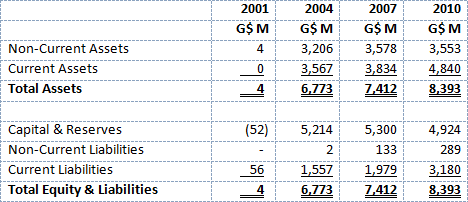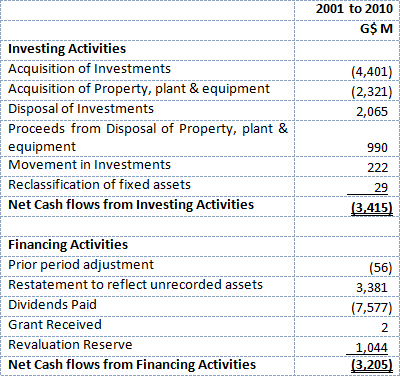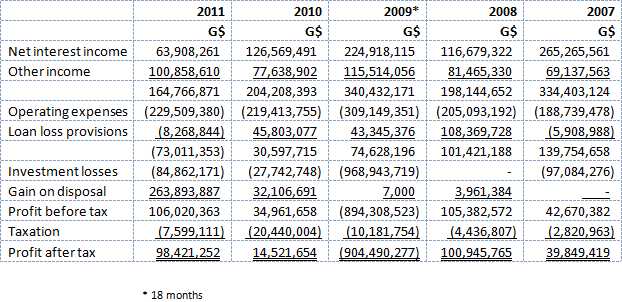Introduction
The so-called Marriott Hotel, a scheme conceived by former President Bharrat Jagdeo − after one of his friends failed in his bid to buy the Guyana Pegasus – blessed by Mr Jagdeo’s successor President Ramotar, facilitated by Dr Ashni Singh, his Finance Minister and Chairman of National Industrial and Commercial Investments Limited (NICIL), executed by Mr Winston Brassington, NICIL’s CEO, and defended by political heavyweights like Drs Luncheon and Gopaul, puts in the shade the questionable transactions undertaken in the name of the people of Guyana since 1992. That is no small achievement.
Over the years Business Page has lamented the manner and extent to which the PPP/C Government, having criticised the PNC for its conduct of the privatisation programme, has been willing to sell the public assets of the country, often under very questionable circumstances and not infrequently, to questionable people. One criticism that I have not heard of the PNCR was any failure to account for the proceeds of those deals.
The actions of the PPP/C have been contrasting. Sometimes the transactions were so extraordinary as to arouse public attention, resigned scepticism and outright accusations. Think of those illegal concessions to Mr Jagdeo’s friend Dr Ramroop, transactions which prompted Mr Jagdeo to describe Mr Yesu Persaud as needing re-education. It turned out that the ones who were ignorant of the tax laws were Mr Jagdeo himself, Dr Singh and Mr Winston Brassington. On other occasions Guyanese came to learn of the transaction from abroad, as in the award of large swathes of our forest to Vaitarna of India and the diversion of more than $600 million. Even after the major disclosure in the Times of India, the Jagdeo/Singh duo never informed the nation that the money was used to plug a hole left in the wake of the Clico debacle in which Mr Jagdeo and Dr Ashni Singh were joined by another Singh − Gita − as lead characters. And from Jamaica we learnt that the Government of Guyana had committed this country to borrowing billions of dollars from the Chinese − most of which will never reach Guyana − to carry out works at the CJIA, works the country neither needs nor can afford. Just let us ask Delta.
Trading Guyana
Business Page from time to time has lamented that the Government was selling out the store and later, that it was selling out the store again. We warned that there is no such thing as a free chowmein, prompting a tirade of abuse directed at me by a senior government official, accusing me of lack of patriotism, and working against the development of Guyana. Only this week I was reminded of Samuel Johnson’s aphorism “patriotism is the last refuge of a scoundrel.”
The Marriott project has all the hallmarks of the several misdeeds inherent in the Queens Atlantic imbroglio, the transgressions of Vaitarna and the silence and non-accountability of the airport expansion transaction. So what makes the Marriott Hotel so special? It is that unlike the other transactions that merely sold out the store, the contract for the construction of the so-called Marriott Hotel involves selling out Guyana and its soul. And as you read on you will marvel at the brass, the contempt and the lawlessness demonstrated by the officers of a company called Atlantic Hotels Inc.
‘Egregious’ is a word Business Page has often used to describe what has passed for accountability in Guyana. I now need to find a term that surpasses egregious in scale and scope. To date the Marriott revelations have centred on the Chinese whose appetite for Third World resources causes it to act like the beads-for-precious stones policy of the Europeans in the early days of discovering foreign lands. And it is a skill they have honed with great success in Africa, first because of that continent’s resources and second, because they found that where there is weakness, incompetence and corruption by the government and silence among the people, a football stadium or a road can go a long way. Especially if the road leads to a mine or forests.
A scheme called Atlantic Hotel Inc.
The recent protests against the misnamed Marriott Hotel project – Marriott is not putting a blind cent in the investment – have paid little attention to the role of two individuals, Winston Brassington, the sole director of Atlantic Hotel Inc (AHI) and Ms Marcia Nadir-Sharma, the company’s corporate secretary and in-house attorney. It is their hands and signatures that adorn many of the Marriott documents in which Guyana has relinquished sovereignty to the Chinese. Everyone knows that Mr Brassington and Ms Nadir-Sharma could not do what they continue to do without the express authority of the two Presidents, Dr Ashni Singh and the Cabinet.
But the importance of the role of Mr Brassington and Ms Nadir-Sharma is that Mr Brassington is the sole director, Chairman and CEO of AHI while Ms Nadir-Sharma is its only other officer, information published in these columns on August 8, 2010.
Here are some facts about AHI that seem worthy of ventilation. AHI is a 100% subsidiary of NICIL, for years a corporate outlaw. AHI was incorporated on September 3, 2009 with a share capital of one million Guyana dollars (sic). From its incorporation to its latest filing on record three days ago, the only shares issued have been 10,000 shares at $100 each in the name of NICIL. By Resolution of 28th September 2010 the company increased its share capital from $1M (10,000 shares @ $100 each) to $3 billion (300,000 shares at $10,000 each) prompting questions about Ms Nadir-Sharma’s familiarity with section 5 of the Companies Act 1991.
It is Mr Brassington and not the Govern-ment which signed every agreement with the Chinese company, Shanghai Construction Company, through its Trinidad and Tobago subsidiary, for the construction of the hotel. To get a good sense of the documents we can look at a letter dated October 1, 2011, supposedly sent by Mr Brassington in his capacity as Chairman of AHI to Mr Michael Zhang, General Manager of SCG International (Trinidad and Tobago) Limited presenting ten documents to Mr Zhang for “initialing.” Included in the package is an undated Letter of Acceptance from Mr Brassington to SCG informing it that its earlier tender was considered and resulted in a Memorandum of Understanding (MOU) for a Design-Build Contract for the precise sum of US$50,918,112.89. I have not seen a copy of the final contract, but it is likely that any further changes would be in SCG’s favour and not that of AHI or the Government of Guyana.
The MOU
The Memorandum of Understanding, dated June 14, 2011 and signed by Messrs Brassington and Zhang, notes that SCG had submitted a tender of US$65 million based on an original design but that the amount was considerably above the $41 million budgeted cost for the construction. The MOU goes on to state that SCG − and apparently no one else − was allowed to submit an alternate design meeting Marriott international design standards.
The MOU reflects a situation in which SCG went for the kill, realising that it had all the cards and that its opponent was either weak, compromised by circumstances or grossly incompetent. It demanded, in exchange for a reduction of US$14 million in the contract price, the following amendments to the initial contract document:
1. The removal of any obligation on SCG to pay all taxes, duties and fees, and obtain all permits, licences and approvals … placing these on AHI. Moreover, SCG demanded that it receive full exemptions from all taxes. Mr Brassington agreed.
2. That it be allowed to import any personnel who are necessary for the execution of the project. Mr Brassington agreed. It turned out to be 100%!
3. That its obligation to repay an Advance Payment under clause 14. 2 of the agreement be removed. Mr Brassington agreed.
4. That the principal provisions regarding Claims, Disputes and Arbitrations be deleted in their entirety. Mr Brassington agreed.
The result is a complete sell-out of every principle that served Guyana’s interest, an agreement that was re-written by SCG for SCG. And Mr Brassington agreed.
Conclusion
SCG in a letter to Mr Brassington dated May 18, 2013 said that its revised bid price does not include the cost of the promenade/boardwalk, LEED certification cost, PAYE package, health charges, NIS contribution, work permits and visa fees required by law.
It is not clear why it was necessary to refer to PAYE as an exclusion, since PAYE is borne by the employee and further, effectively granting to SCG a waiver of all or any part of NIS, a cost which by law is shared between employer and employee.
The contract price seems to exclude both. In return, all SCG was required to do was assist AHI to secure funding for the project of US$7 million to US$30 million.
Just what else the directors of AHI have done, how they managed to do it and the further absurdity of the Marriott project will be the subject of the next Business Page.





